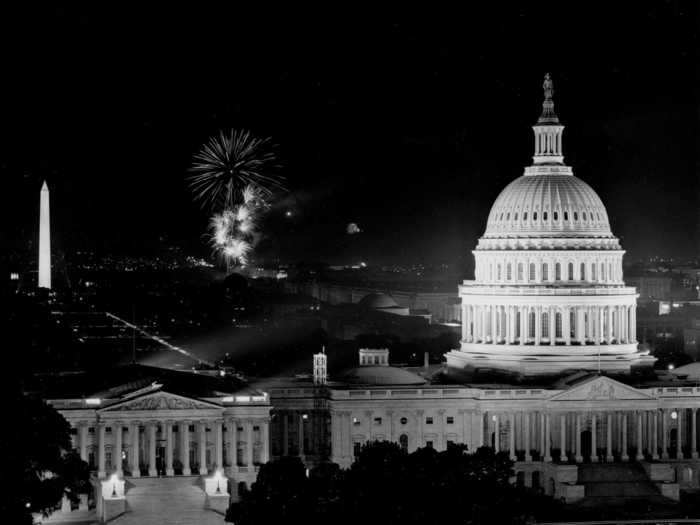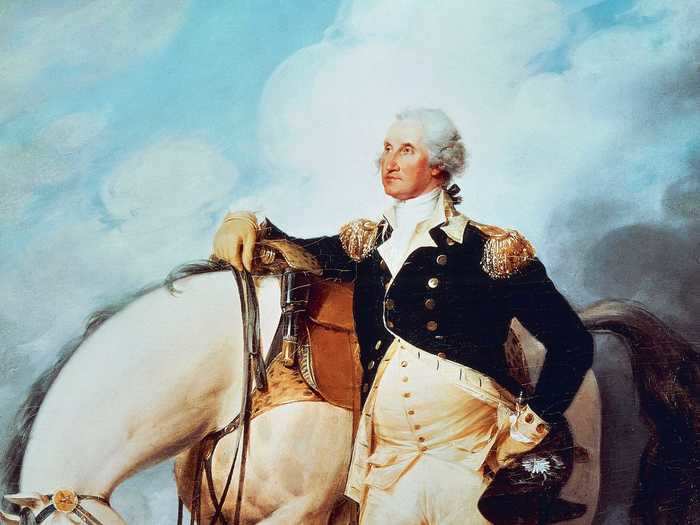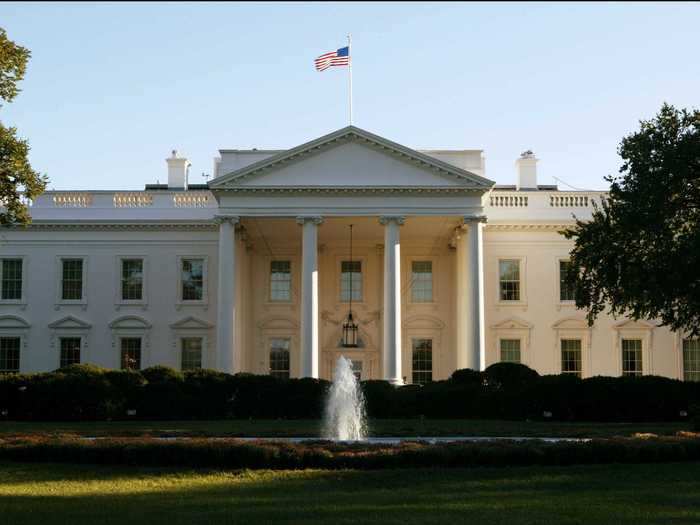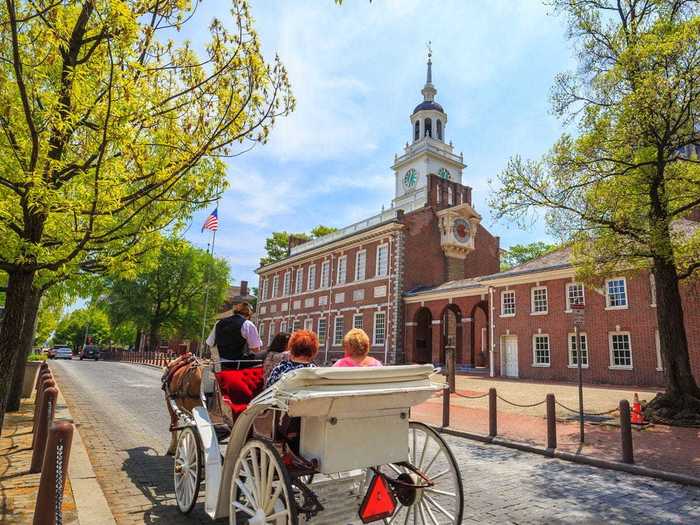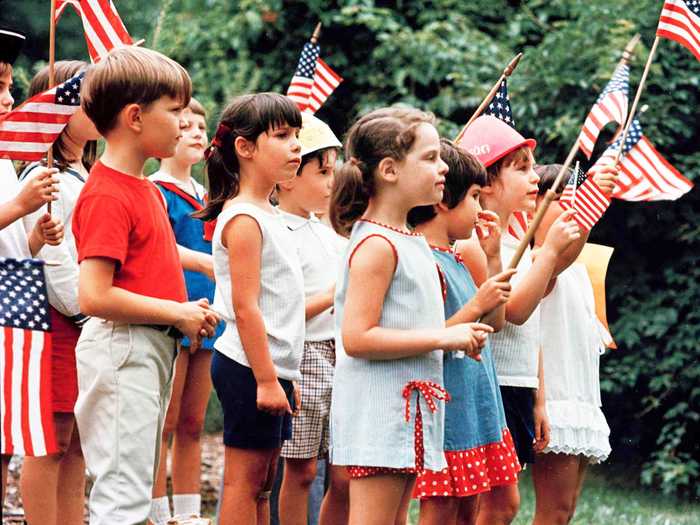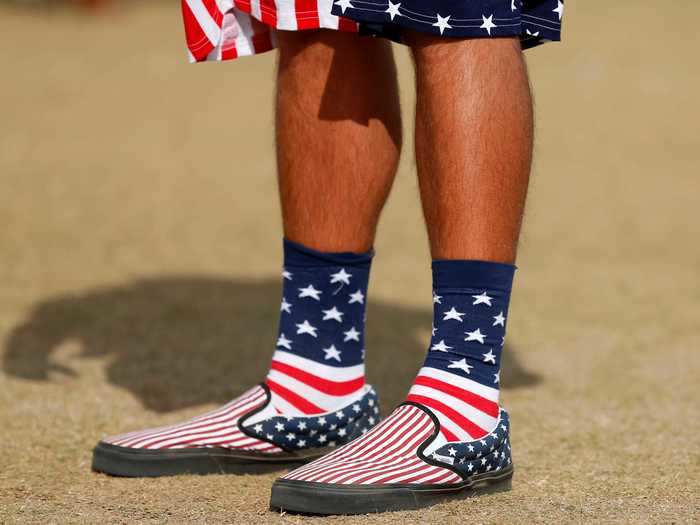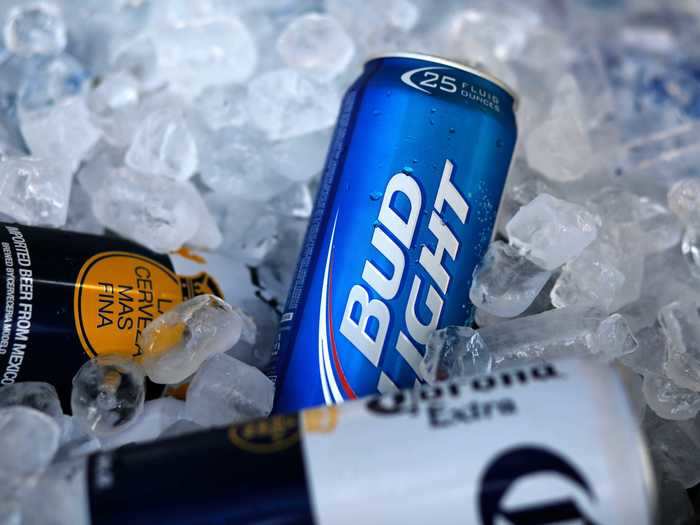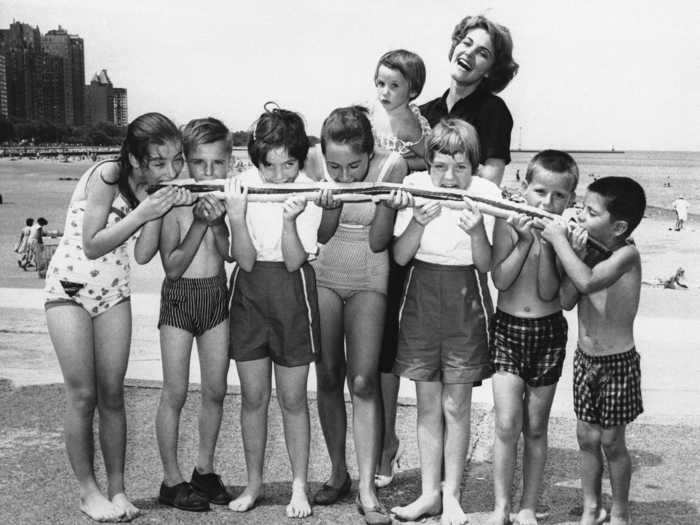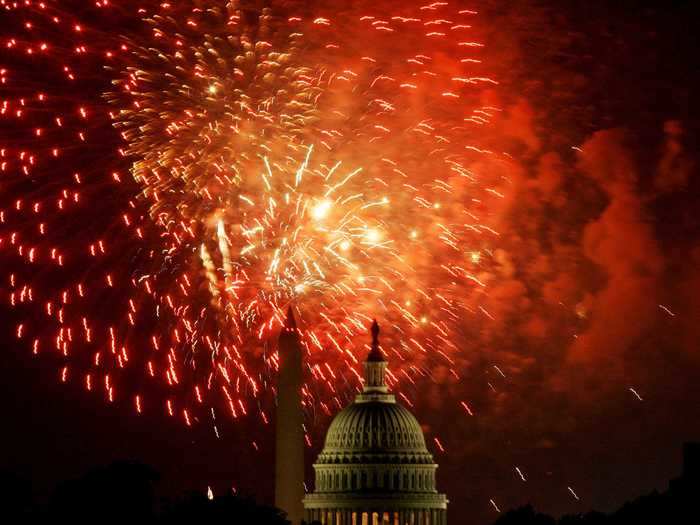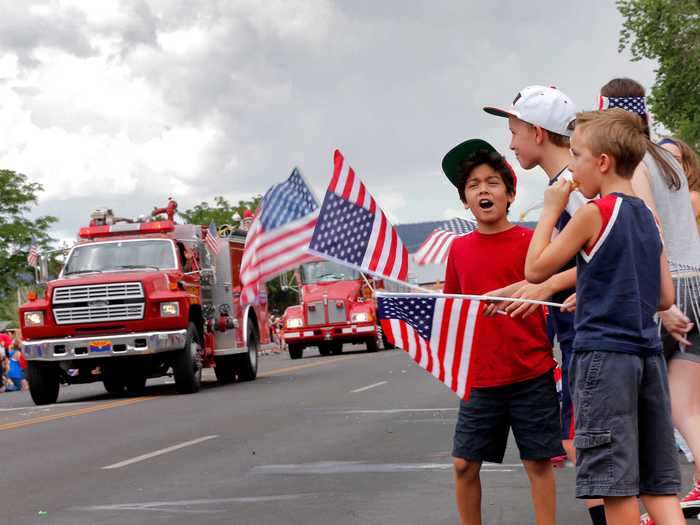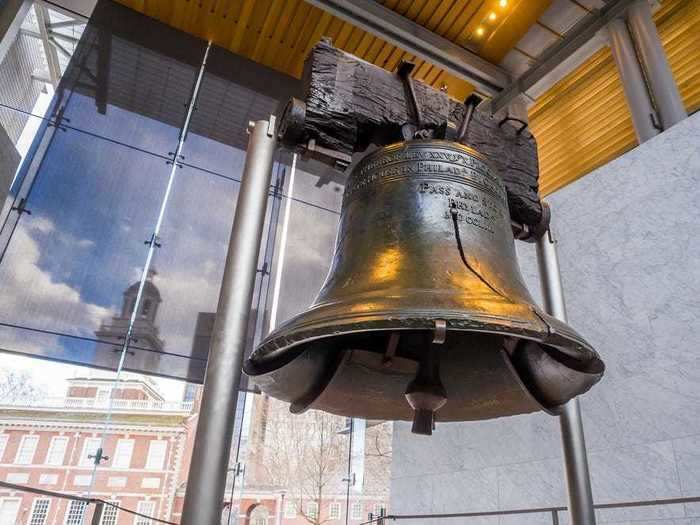Crowds of people at New York's Battery Park react to the fireworks display over the Statute of Liberty on July 4, 1986.Robin Graubard/AP
- For many Americans, the Fourth of July is a day of vacation and a time to picnic and barbecue with family and friends — but many people don't know the facts behind some of the Fourth's biggest traditions.
- Independence Day should actually be celebrated on July 2, not July 4. The Continental Congress voted for independence on July 2, 1776, according to the National Archives.
- Americans consume an estimated 150 million hot dogs each year on the Fourth.
For many Americans, the Fourth of July is a day off work, a time to celebrate with family and friends, and an opportunity to cook up some classic American dishes. This year, the Fourth of July may look different, especially as coronavirus cases are rising and Americans are still encouraged to practice social distancing.
Although celebrating is part of the fun, now is also a great time to learn July Fourth facts you definitely weren't taught in school. Keep reading to discover lesser-known facts, from Americans' hot dog and beer consumption to the real date of Independence Day.
Independence Day should technically be celebrated on July 2.
Rockets burst into the sky during traditional Fourth of July fireworks celebrating the 185th anniversary of Independence Day in Washington, DC, on July 4, 1961.
AP
According to the National Archives, the Continental Congress actually voted for independence on July 2, 1776. And even though the written Declaration of Independence was dated July 4, it wasn't signed until August 2, 1776.
George Washington supposedly celebrated America's independence by giving double rations of rum to his solders in 1778.
According to the History Channel, prior to the signing of the Declaration of Independence, people living in the American colonies used to celebrate the king's birthday with "the ringing of bells, bonfires, processions, and speechmaking." During the summer of 1776, some colonists held mock funerals for King George III to celebrate the nation's new freedom.
Three US presidents and Founding Fathers died on the Fourth of July: John Adams, Thomas Jefferson, and James Monroe.
The White House.
Alex Wong/Getty Images
There were 2.5 million people living in the newly independent US on July 4, 1776, compared with 2019's population of about 330 million, according to the US Census Bureau.
Visitors ride in a carriage past Independence Hall in Philadelphia, where the Declaration of Independence was signed.
11photo/Shutterstock
At the time of America's independence, of the 13 colonies, Pennsylvania had the highest estimated population of 434,373 people. The colony with the lowest estimated population in 1776 was Delaware, with 59,094, according to the US Census Bureau.
It's important to note that these are estimates, as the US did not conduct its first official census survey until 1790.
Celebrating Independence Day wasn’t a federal holiday until 1870 — more than 100 years after the signing of the Declaration of Independence.
Children celebrating the US Bicentennial on July 4, 1976.
AP
The nation's oldest Fourth of July parade takes place in Bristol, Rhode Island. The town's Independence Day festivities date back to 1785 and now include a Miss and Little Fourth of July pageant.
Members of the East Greenwich, Rhode Island, Kentish Guards perform during the Bristol, Rhode Island, Independence Day Parade in 1996.
Matt York/AP
Richard V. Simpson, a historian from the Rhode Island town, told Mental Floss that the first celebration in 1785 was a small affair with less than two attendees.
Now, Bristol's Fourth of July celebration begins on Flag Day (June 14) with local events leading up to the Independence Day parade, which stretches 2.5 miles through the town.
This year, the 2020 Miss/Little Miss Fourth of July Pageant and Drum & Bugle Corps competition were canceled to respect the restrictions on large social gatherings due to COVID-19.
On the Fourth of July in 1934, Hungarian-American physicist Leó Szilárd submitted an application to patent the atomic bomb.
Images of the first US atomic bomb test in 1945.
US Army/AP
Wearing American flag apparel actually violates a set of guidelines called the US Flag Code.
The US Flag Code, established in 1942, sets guidelines about what Americans should and should not do in order to respect the nation's flag.
Mike Blake/REUTERS
The fashion industry thrives on reproducing symbols and designs, and the American flag — like flags of all nations — is certainly a powerful symbol that can communicate messages of politics, patriotism, and pride.
But in 1942, the US Flag Code was established to set guidelines about how the US flag should be displayed and used. According to Smithsonian Magazine, the US Flag Code originated from a fear of addressing the national flag in a way that was reminiscent of the Nazis. One of the guidelines is: "The flag should never be used as wearing apparel, bedding, or drapery."
The code, however, is unenforceable. According to the United States Senate Committee on the Judiciary, "the Flag Code does not prescribe any penalties for non-compliance nor does it include enforcement provisions."
The Fourth of July produces the highest beer sales out of all federal US holidays.
Bud Light is the biggest beer brand in the US by volume, according to a 2018 article from Business Insider.
Gene J. Puskar/AP
On the Fourth of July each year, Americans eat an estimated 150 million hot dogs, which, if laid out horizontally, would stretch from Washington, DC, to LA more than five times.
Kids celebrating National Hot Dog Month at Oak Street Beach in Chicago, 1959.
Edward Kitch/AP
The National Hot Dog and Sausage Council, a trade association and part of the American Meat Institute, reported that Americans will indulge in 150 million hot dogs on July fourth. Gearing up for the holiday, they also reported that 10% of annual retail hot dog sales occur during the month of July, which is also National Hot Dog Month.
Founding Father Thomas Jefferson was reportedly the first American to write an ice cream recipe.
Ice cream is a classic summer treat.
Kseniia Perminova/Shutterstock
Jefferson, the third US president and co-signer of the Declaration of Independence, likely had his first encounter with ice cream when he travelled to France between 1784 and 1789, according to the estate and historical society of Thomas Jefferson.
During his time as president, the dessert did become more popular because of how often he served it in the president's house, according to the historical society.
This year, Americans are expected to spend $6.52 billion on food items for their Fourth of July picnics.
In 2017, Americans' spending on Fourth of July food was $7.15 billion, a national record, according to the NRF.
Shutterstock/T Photography
Fireworks caused five deaths and 9,100 injuries in 2018. Out of the firework injuries treated in emergency rooms, nearly two-thirds occurred between mid-June and mid-July, according to the American Academy of Ophthalmology.
It's best to leave fireworks to the professionals.
Haraz N. Ghanbari/AP
The American Academy of Ophthalmology also reported that 19% of firework injuries are eye injuries, and severe cases result in vision loss or severe eye damage.
Recently, firework sales have soared all across the US, and noise complaints in New York City have increased by almost 4,000%, according to Business Insider.
Children 15 years old and younger accounted for 36% of firework-related injuries in 2019.
In 2019, nearly half of firework injuries treated in the emergency room were individuals younger than 20 years old.
Matt York/AP
Speaking of fireworks, Americans bought 273 million pounds of fireworks in 2019.
People hang from the Sky Flyer ride at the State Fair Meadowlands during a Fourth of July fireworks display in 2015.
Julio Cortez/AP
There are 33 counties and US Census-incorporated places, such as monuments or parks, that include the word "liberty."
The last time the Liberty Bell in Philadelphia was rung was on George Washington's birthday in 1846, according to the Constitution Center.
f11photo/Shutterstock
According to the US Census Bureau, as of 2016, there were 33 counties and US Census-incorporated places that contain the word "Liberty" in the name; four are counties in Texas, Georgia, Florida, and Montana.

